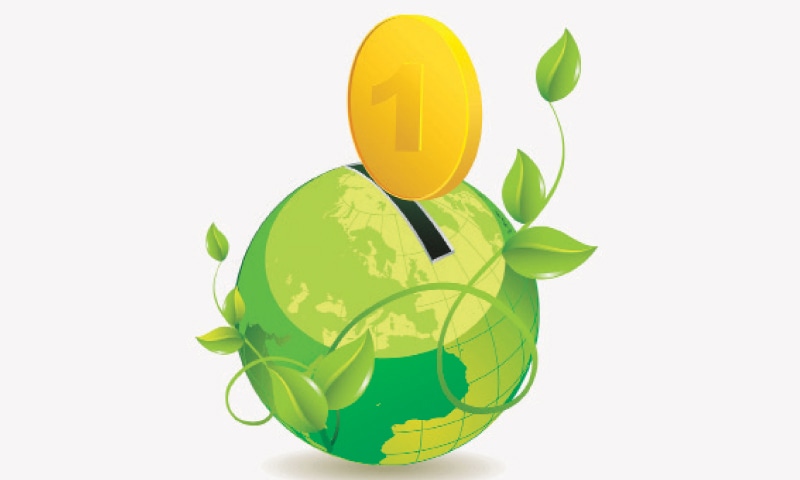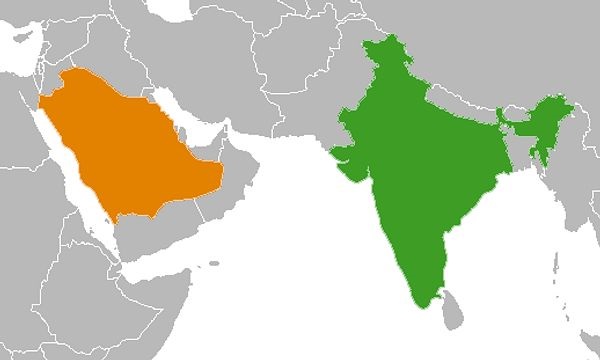GREEN BANKING: A SUSTAINABLE BANKING FOR ENVIRONMENTAL SUSTAINABILITY
RENI ROYSON
Research Scholar, Mar Ivanios College, Trivandrum
Environmentalism is a social movement that shows the concern for environment conservation and improvement of the state of the environment. The concept for environmental sustainability by the banks has given rise to concept of green banking. In an emerging economy like India, environmental management needs to be the key focus area of the business fraternity and especially the banking industry being the major intermediary. This would help the firms in the emerging economies to utilize their limited resources in an optimum way without harming the natural environment and face the global challenge of sustainability in successful manner. In the present paper green banking and sustainability has been discussed in detail. The paper also highlights on the stage, initiatives, benefits and future of green banking in Indian context.
Keywords
environmentalism, sustainability, fraternity, conservation, global challenge.
Introduction
There is no universally accepted definition of the term “green banking”, although it has been widely used both in scientific and in popular literature, and is gaining more and more importance at present times. The banking industry influences economic growth and development, both in terms of quality and quantity, leading to a change in the nature of economic growth. The concept of “Green Banking” will be mutually beneficial to the banks, industries and the economy. Green financing is the part of green banking. Green banking means promoting environmental friendly practices and reducing your carbon footprints from your banking activities. Green banking aims at improving the operations and technology along with making the clients habits environment friendly in the banking business. It is the way of conducting the banking business along with considering the social and environmental impacts of its activities
Environment management in the banking business is considered likely to be risk management. It increases the enterprise value and lowers loss ratio as higher quality loan portfolio results in higher earnings. Therefore, encouraging environmentally responsible investments and prudent leading should be one of the responsibilities of the banking sector. The banking operation targets a certain long-term rate of return on their credit and investment. Nevertheless, every credit extension and investment carry the risk of non-payment and reduction of value (in case of direct investment) due to environmental liabilities. Therefore, it is of importance to the banking sector to follow certain environmental evaluation of the projects before financing. There are studies showing positive correlation between environmental performance and financial performance (Hamilton, 1995; Hart, 1995; Blacconiere and Pattern, 1993). Thus, it is essential for the financial institutions in the present to consider environmental performance in deciding whether to invest in companies or advise the clients in doing so
OBJECTIVES OF THE STUDY
The objectives of the study are listed below;
1) To understand the concept of green banking philosophy adoption by the banks.
2) To identify the steps necessary for the adoption of green banking.
3) To identify the sustainable banking practices for environmental sustainability.
4) To analyze green banking initiatives taken up in India and to analyzed steps taken by some of the Indian banks in this regard.
METHODOLOGY
The study mainly includes literature review from secondary data. The secondary source includes information published in articles, journals and by various organizations and other internet sites.
GREEN BANKING: DEFINITION
Though green banking (environment-friendly banking, ethical banking or sustainable banking) can be defined in a number of ways, in a broader perspective, it is the environment-friendly banking practices that promote their customers to reduce the carbon footprint through their banking activities. The Indian Banks Association defines it as “Green Bank functions like a normal bank along with considering the social and environmental factors for the protection of the natural re- sources”. According to RBI (IDRBT, 2013), green banking is to make internal bank processes, physical infrastructure and Information Technology effective towards environment by reducing its negative impact on the environment to the minimum level. The UNEP-FI (2007) states that sustainable bank considers the impacts of its operations, various products and services for the current as well as future generation. In order to promote reduction in the external carbon emission, the banks should focus on financing the technology and projects that are environment friendly. It is the way of conducting the banking business along with considering the social and environmental impacts of its activities (Jha and Bhoome, 2013; Mishra, 2013; Biswas, 2011).
GREEN BANKING – CONCEPTUAL OVERVIEW
Green Banking itself insinuates promoting environmental friendly banking practices and reducing carbon footprint from banking activities. To add simplicity to this term, it is a form of banking which ensures less utilization of natural resources and optimal reduction of wastage of paper/carbon footprint. Green banking practices are also labeled as “ethical banking” or a sustainable banking. The key idea behind this banking concept is to enhance the conservation of earth’s environment/habitats resources. How can it be done?
• Promoting the usage of online banking instead of branch banking
• Paying bills online
• Opening up CDs and money market accounts through online banking, instead of large multi-branch banks
IMPORTANCE OF GREEN BANKING
Until recently, green banking just seemed like an initiative and such environmental concerns did not really seem to be relevant to a bank’s operations. Initially, a bank checking their client’s environmental worthiness would have been considered as prying into a private business. However, now the perception looks towards how this brings risks to their business. Although the banking and financial institutions are not directly affected by the environmental degradation, there are indirect costs to banks. Credit, legal and reputations risks have constantly been haunting these banks unless such initiatives are taken
STEPS IN GREEN BANKING
• GO ONLINE
Online banking is the thriving concept in young and corporate India. Online banking helps in additional conservation of energy and natural resources. Online banking includes paying bills online, remote deposit, online fund transfer
It helps in savings paper, energy and expenditure of natural resources due to banking activities. Customers can save money by avoiding late payments of fees and save time by avoiding standing into queues and paying the bill
• USE GREEN CHECKING ACCOUNTS
Customers can check their account details through ATM machines provided in bank kiosks or special touch screens in the branches of different banks. This can be called green checking of account. Banks should promote green checking by giving some incentives to customers by giving higher rate of interests, waiver or discount in fees etc.
• USE GREEN LOANS FOR HOME IMPROVEMENT
The Ministry of Non-renewable Resource in association with some nationalized and scheduled commercial banks in India undertook an initiative to go green by allowing low interest loans to the customers who would like to buy solar equipment; the rate of interest is as low as 4% p.a. The new Green Home Loan Scheme from SBI, for instance, supports environmental friendly residential projects and offers various concessions.
• POWER SAVINGS EQUIPMENT
Bank directly contribute to controlling climate change and as an initial step they intend to start a campaign to replace all fused GSL bulbs, in all owned premises offices and residential Banks have also initiated a feasibility study to make rain water harvesting mandatory in all the Bank’s owned premises.
• USE GREEN CREDIT CARDS
Banks are promoting different schemes of using plastic money rather than currency notes in order to save environment.
• USE OF SOLAR AND WIND ENERGY
Using solar and wind energy is one of the noble causes for going green. State Bank of India (SBI) has become the first bank in the country to venture into generation of green power by installing windmills for captive use. As green power by installing windmills for captive use. As part of its green banking initiative, SBI has installed 10 windmills with an aggregate capacity of 15 MW in the state of Tamil Nadu, Maharashtra and Gujarat.
• MOBILE BANKING
Mobile banking saves time and energy of the customers. It also helps in reducing use of energy and paper of the bank. Most of the Indian banks have introduced this paper-less facility in order to be eco-friendly.
ADVANTAGES OF GREEN BANKING
1) Basically Ethical banking avoids as much paper work as possible and rely on online/electronic transactions for processing so that you get green credit cards and green mortgages. Less paper work means less cutting of trees.
2) Creating awareness to business people about environmental and social responsibility enabling them to do environmental friendly business practice.
3) Use of online banking instead of branch banking saves time.
4) Green banks adopt and implement environmental standards for lending, which is really a proactive idea that would enable eco-friendly business practices which would benefit our future generations.
5) When you are awarded with a loan, the interest of that loan is comparatively less with normal bank because ethical banks give more importance to environmental friendly factors ecological gains.
DISADVANTAGES OF GREEN BANKING
1) Customer Care: There is no personal contact with any of the staff, and if talk to any staff through the telephone, you have guarantee you are talking to the best person available.
2) Security Concern: Even though online banking sites are heavily encrypted, with the developing technology, it’s hard to rule out the “hackers” who may access your bank accounts.
3) Technical Breakdowns: As with all technologies, online banking websites sometimes go down. If this happen when you closed your local bank or credit card accounts, you will definitely go penniless.
4) Difficult to operate: Banking sites can be difficult to navigate at first. Getting acquitted with the banking sites software may require some time to read the tutorials in order to become comfortable in your virtual lobby.
SUSTAINABLE DEVELOPMENT AND SUSTAINABLE BANKING
According to the “report of the World Commission on Environment and Development Sustainable Development” (United Nations, 1987), Sustainable Development is the way of using the resources that not only meet the human needs of present and future generation but also preserve the environment. The field of sustainable development comprises of three constituents - environmental sustainability, economic sustainability and socio-economic sustainability. Sustainable banking as per the United Nations Environment Programme Finance Initiative (UNEPFI, 2007) is defined as “the process by which the banks consider the impact of their various operational activities and their products and services for meeting the needs of the current as well as the future generations”.
STAGES OF SUSTAINABLE BANKING
There are four stages where the finance sector in specific, banks can progress through sustainability: Defensive banking, preventive banking, offensive banking and sustainable banking. In the first stage, banks are not active in terms of sustainability and even they try to delay the possible applications (for example applications related to energy efficiency). In the second phase, banks realize the sustainability applications that are made obligatory for them by the state or civil society. And in the third phase, they produce sustainable products in addition to their internal issues such as environmental investment funds, financing the sustainable energy etc., but here they are active only in the cases where there is a double-sided gain. In the fourth stage, sustainability influences all the functions of the bank and while the bank makes a decision, it focuses on whether the results of the decision are sustainable or not.
A TYPOLOGY OF BANKING AND SUSTAINABLE DEVELOPMENT
• DEFENSIVE BANKING
In this phase, banks are not active and resist the environmental legislations as it affects the banks’ interest. Consideration of the environmental issues at this stage is an avoidable cost.
• PREVENTATIVE BANKING
Due to various driving forces like government pressure, non-government organizations, pressure from society etc. Banks integrate the environmental issues and risk management activities in to their daily business activities.
• OFFENSIVE BANKING
In this stage, the banks not only consider their internal activities but also consider their external activities. The banks in this stage develop and market environ- mental-friendly projects.
• SUSTAINABLE BANKING
At this stage all the activities of banks are sustainable. Banks do not invest in the ecologically unsound business despite huge profit. The banks do not aim towards highest financial rate of return. The key motive is to get the highest sustainable rate of return. Currently, sustainable banking is possible only for the niche players of the field. Few example for this are- Triodos Bank in Netherlands and Co-operative bank in the UK.
GREEN BANKING INITIATIVES IN INDIA
The Government of India has issued guidelines/ instructions to banks on Green Initiatives. In order to implement the green initiatives of the government, all public sector banks and all regional rural were asked to:
1) Increase the use of Electronic Payment.
2) Increase use of Core Banking Solutions (CBS)
3) Increase use of Video Conferencing
4) Offer Centralized Payment System.
STEPS TAKEN BY SOME OF THE INDIAN BANKS
1) State Bank of India launched its ‘Green Channel Counter’ facility at 57 selected branches as a step towards paperless ‘Green Banking’ for deposit, withdrawal and remittance transactions. With this facility the customers need to fill up any pay-in slips or draw cheques for depositing or withdrawing money from their accounts. At the Green Channel counter, there is a Point of Sale Machine (POS), on which the customer swipes his card. He is then asked by the machine to select the type of transaction, viz. (0) Cash Deposit, (1) Cash Withdrawal and (2) Funds Transfer. And thus the transaction is completed without paper usage.
2) SBI became the first bank in the country to venture into generation of green power by installing windmills for captive use. As part of its green banking initiative, it installed 10 windmills with an aggregate capacity of 15 MW in the states of Tamil Nadu, Maharashtra and Gujarat
3) Under its campaign ‘Hum our Hariyali’, IndusInd Bank Ltd inaugurated Mumbai’s first solar-powered ATM to save on 1980 Kwh of energy annually. It is also supporting various environment friendly finance programmes and projects
4) IDBI has been actively complementing Government of India’s policies, initiatives and targets set for sustainable economic development and environment protection
5) ICICI Bank’s Green initiatives range from Green offerings/incentives, Green engagement to Green communication to their customers. Paperless initiatives like e-statements and e-greetings helped ICICI Bank save 30,000 trees from being felled in 2009-10 besides cutting down spending on stationery by Rs. 7.36 crore.
6) The recycling initiative of Axis bank under the Green Banking banner has helped the bank productively use around 21,572 kilograms of dry waste during the year.
7) Punjab National Bank launched green e-vigilance for the bank which involves paperless dealings in complaint and vigilance procedures through e-network which drastically cuts down cost and time.
FUTURE OF GREEN BANKING IN INDIA
Indian economy is an emerging economy and there is a huge potential of growth of Indian banks by adoption of innovative approach in their strategy making process. There is a need of an approach towards paradigm shift by setting up of the business model which would consider all the three aspect of triple bottom line approach i.e. the people, the planet and the profit. The future of green banking seems to be very promising in India as lots of green products and services are expected in the future. Green excellence awards and recognitions, Green rating agencies, Green investment funds, Green insurance and Green accounting and disclosure are some of the things that would be heard and seen in operation in the near future. Proper green banking implementation will act as a check to the polluting industries. Banks can act like a guideline towards the economic transformation and create a platform that would create many opportunities for financing and investment policy and contribute towards creation of a low carbon economy.
SUGGESTIONS
Make customers more and more aware about green banking through their websites.
Promoting different forms of electronic banking.
Creating customer’s awareness thorough the media.
Carbon footprint reduction by saving energy and paper.
Carbon footprint reduction by offering transportation services for their employees.
Providing environment friendly rewards to customers.
By financing more and more environment-friendly projects.
Join hands in more and more environment preserving causes.
CONCLUSION
Green banking refers to the initiatives taken by the banks to encourage environment-friendly investment. Green banking as a concept is a proactive and smart way of thinking towards future sustainability. In the emerging economies, it is very important for the banks to be pro-active and accelerate the rate of the growth of the economy. As there is a continuous change in the environmental factors leading the banks face intense competition in the global market, the banks need to adhere to the stringent public policies and strict law suits. Banks need to apply morality of sustainability and responsibility to their business model, strategy formulation for products and services, operations and their financing activities and become stronger. By adopting the environmental factors in their lending activities, banks can recover the return from their investments and make the polluting industries become environment-friendly.
REFERENCES
1) Papastergiou, A., and Blanas, G. Sustainable Green Banking: The Case of Greece. MIBES. 2011, available at: http://mibes.teilar.gr/proceedings/2011/oral/16.pdf, retrieved 10 May 2015
2) Jeucken M., “Sustainable Finance and Banking: Slow Starters are Gaining Pace”, available at http://www.sustainability-in-finance.com/ifi.pdf, 2001, retrieved 10 May 2015.
3) Islam S, Das PC (2013), “Green Banking Practices in Bangladesh”, Journal of Business and Management, pp 39-44, available at: http://iosrjournals.org/iosr-jbm/papers/Vol8issue3/G0833944.pdf.
4) Biswas N., Sustainable Green Banking Approach: The Need of the Hour, Business Spectrum, 1(1), 32-38 (2011).
5) Green Banking (2013). IDRBT Publication
6) Green Banking (2014). An Overview Asian J Multidisciplinary Studies, 2(6): 199.





